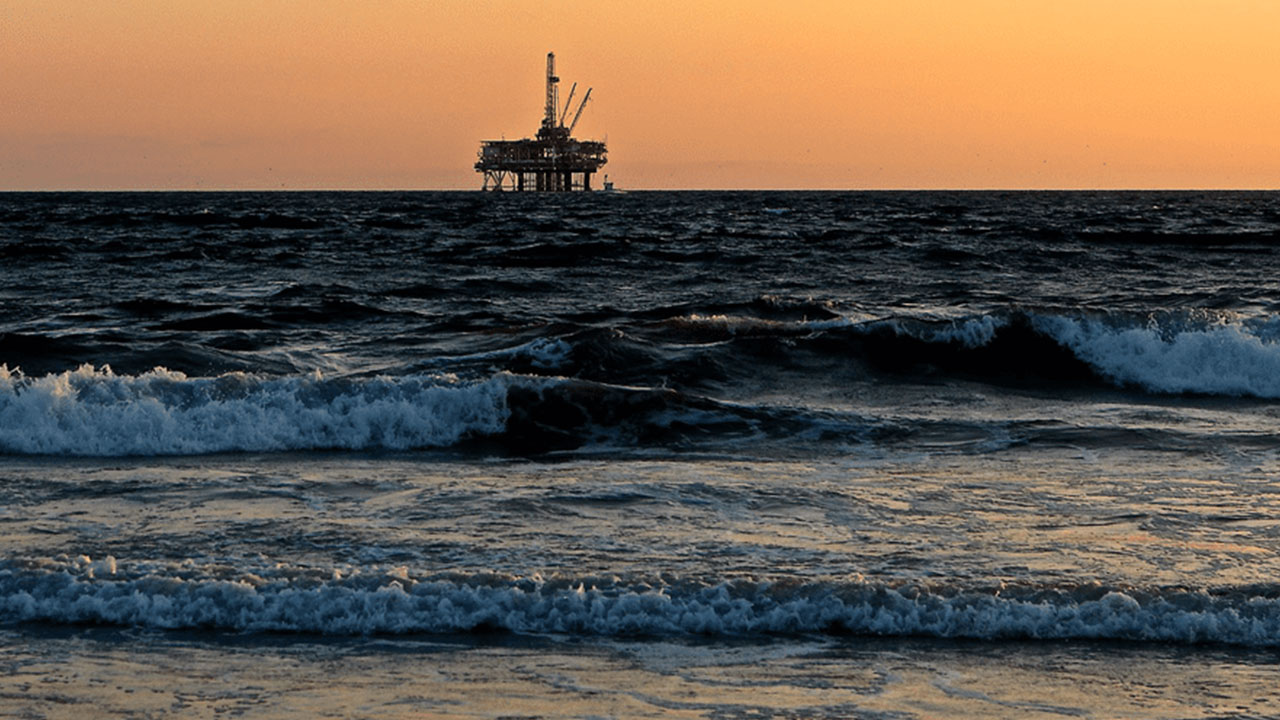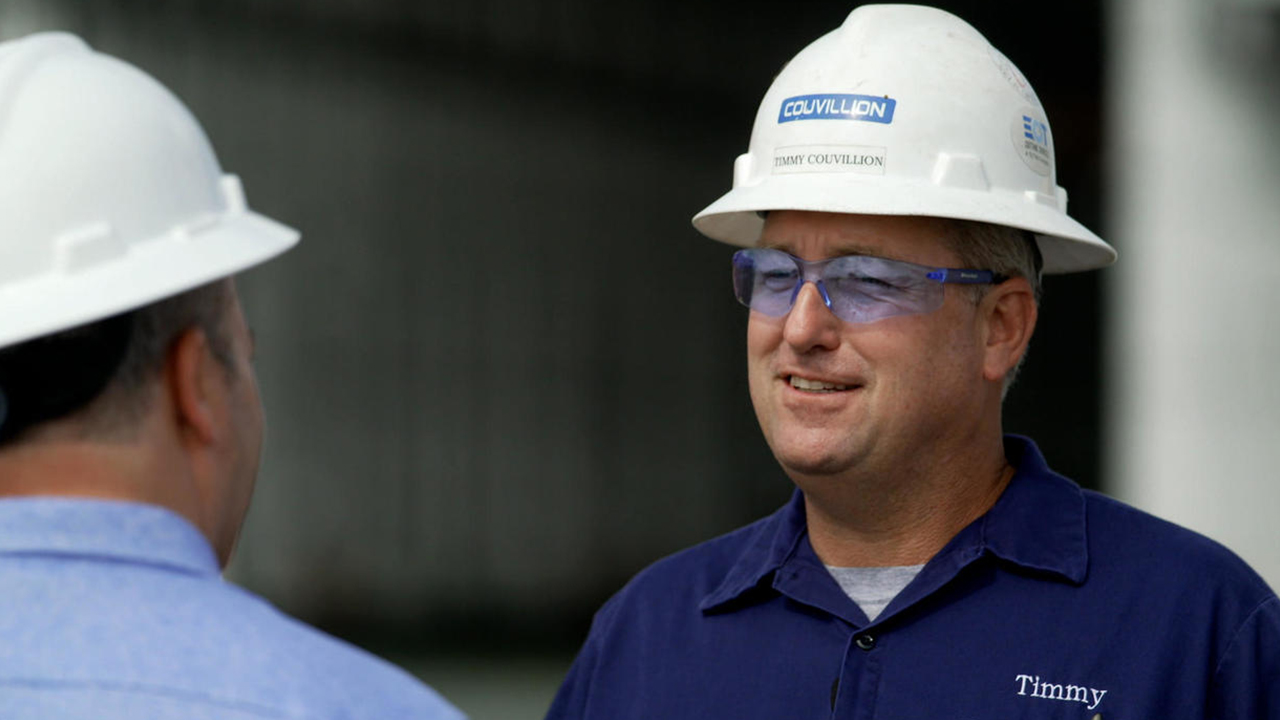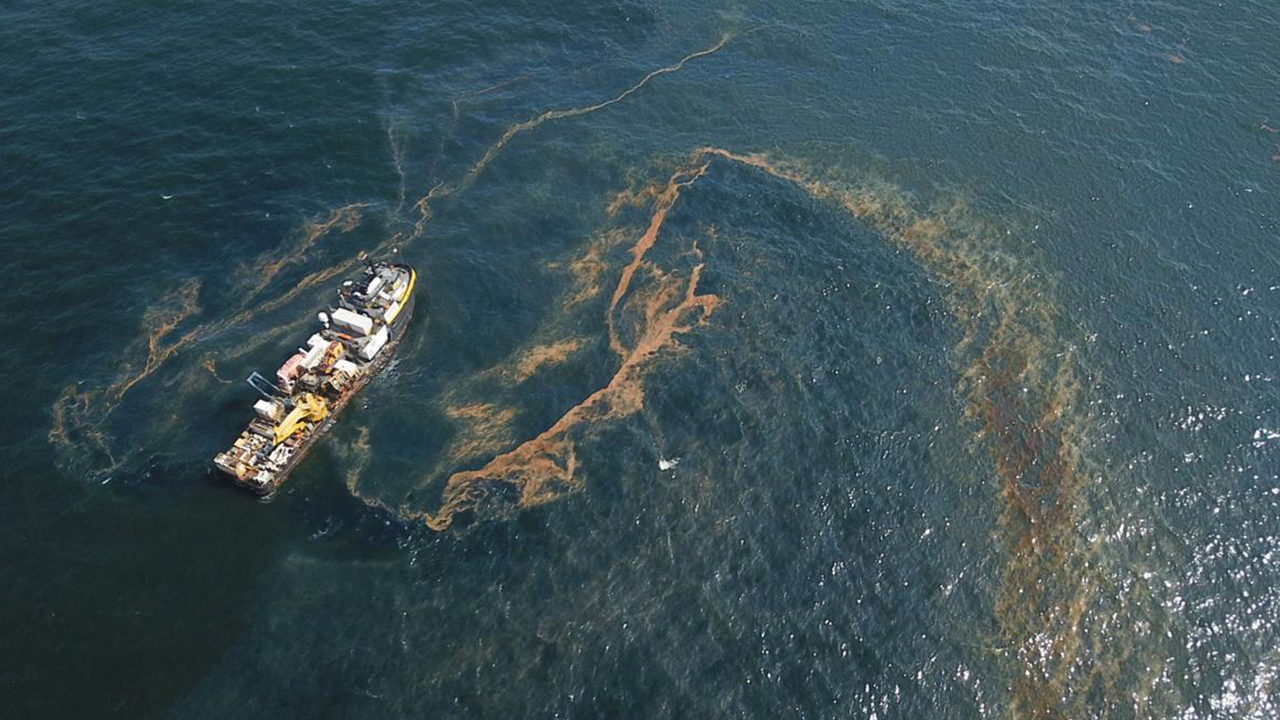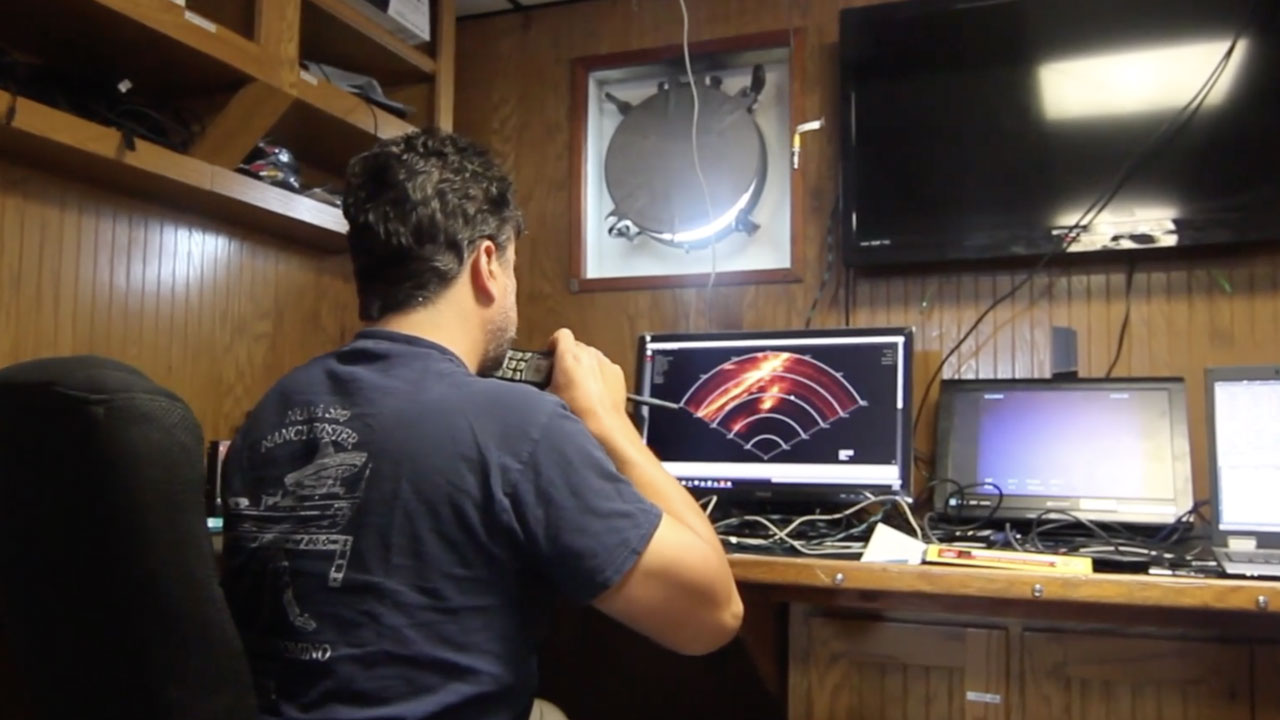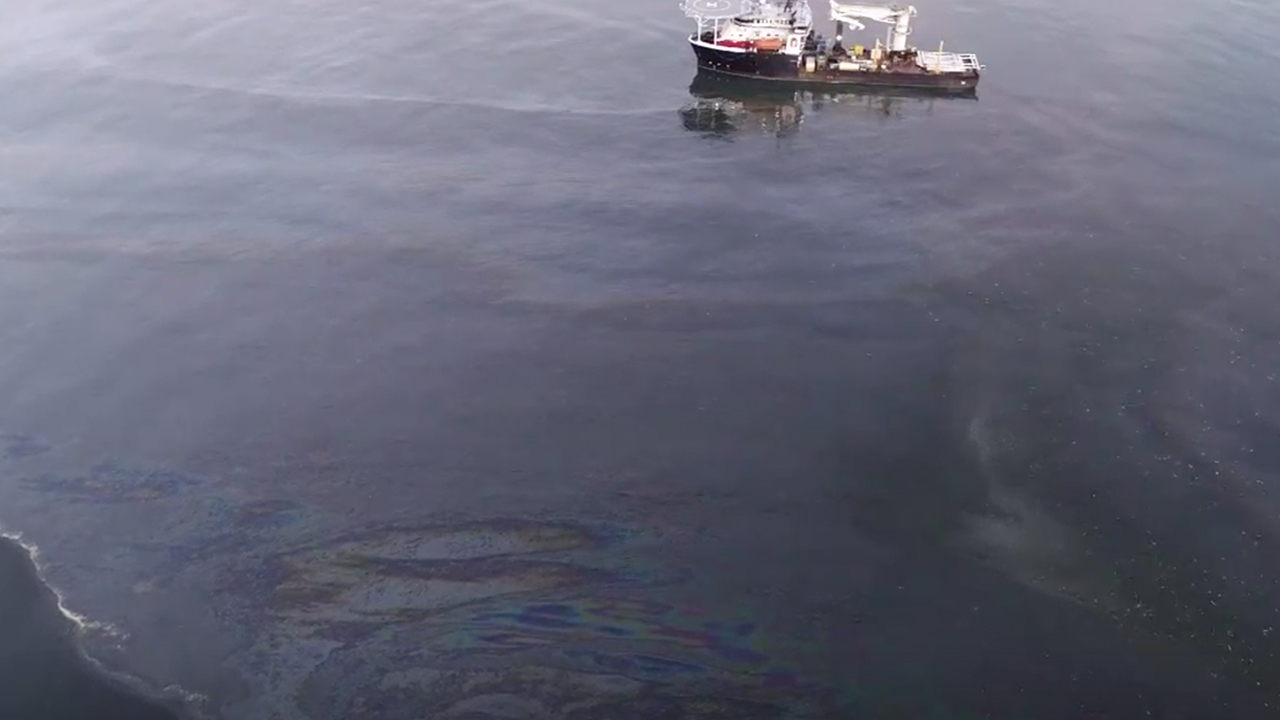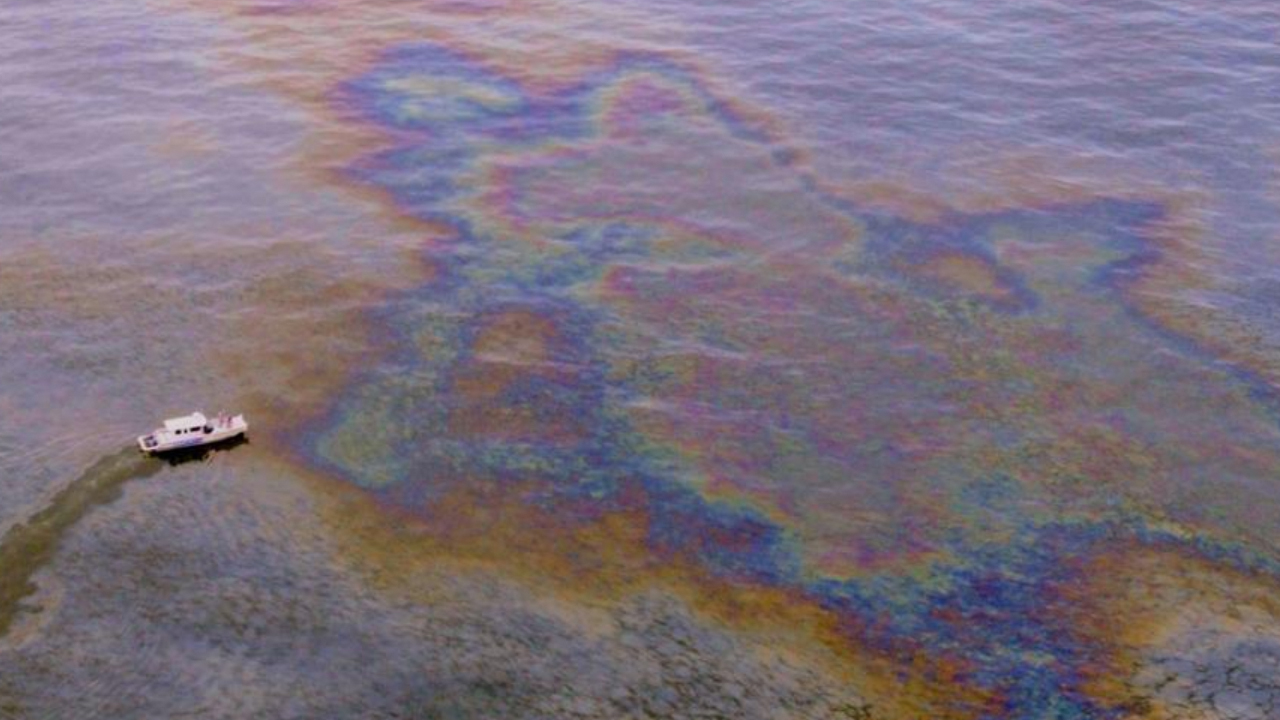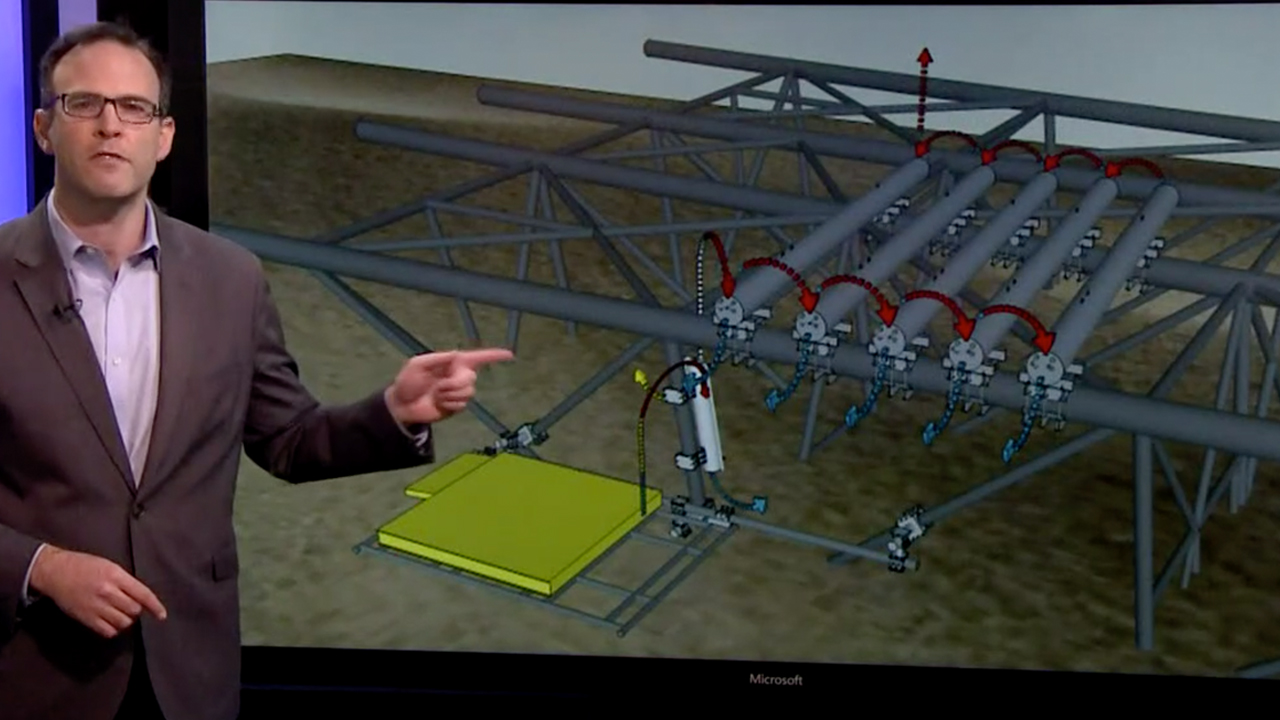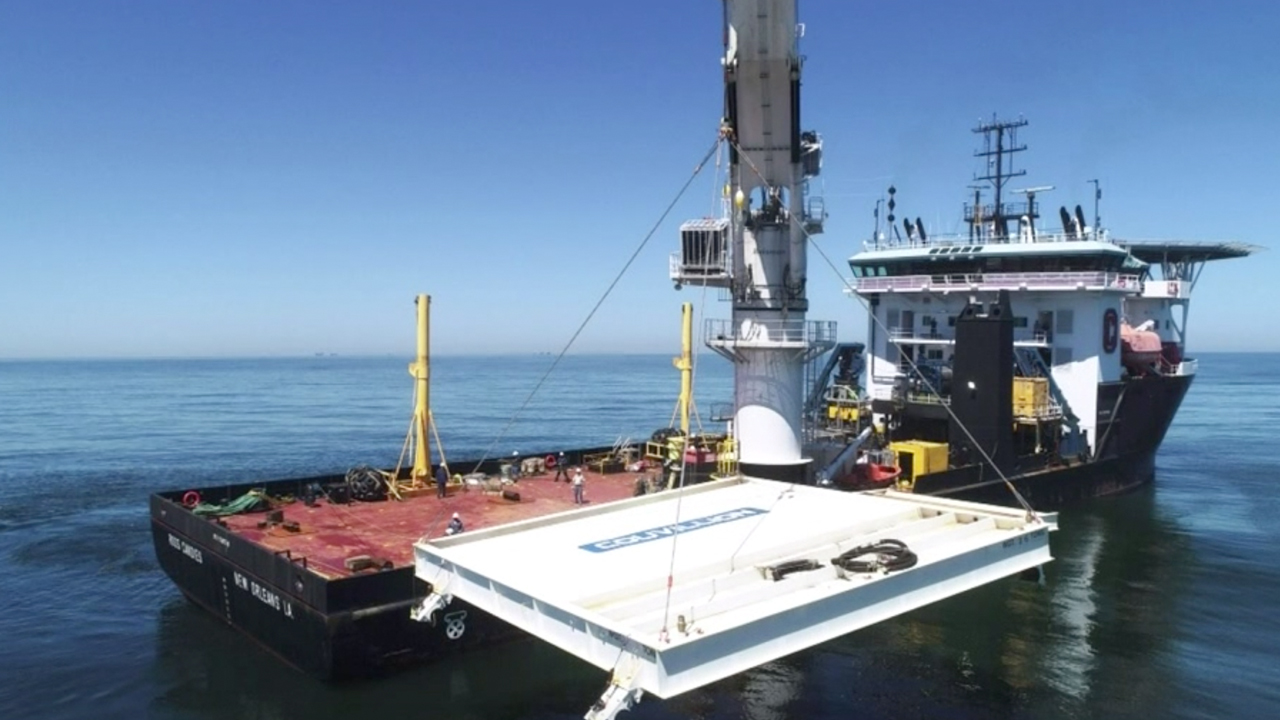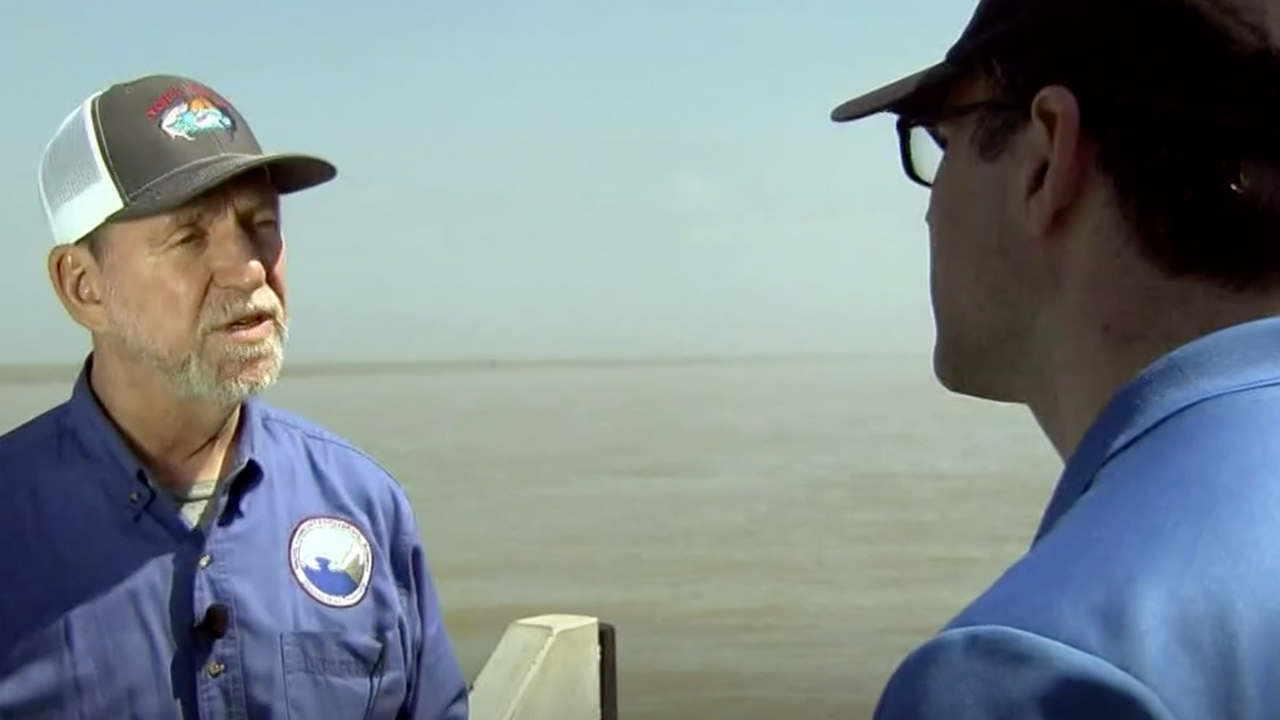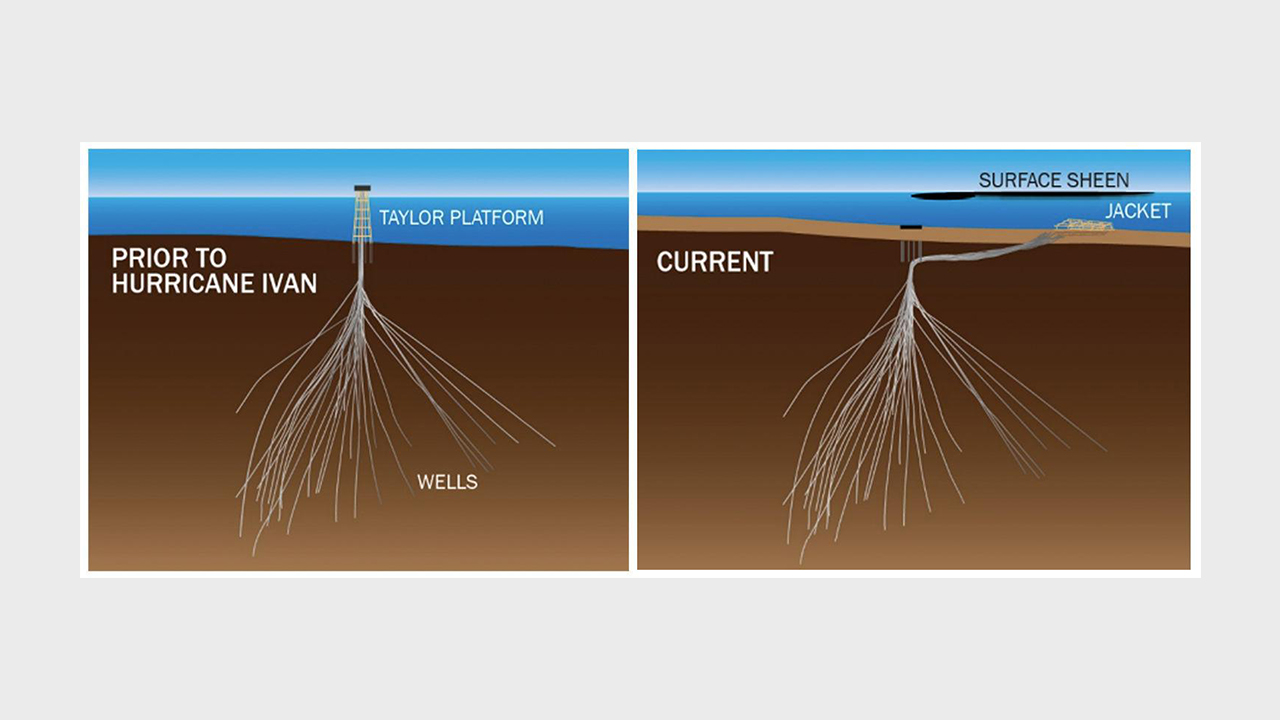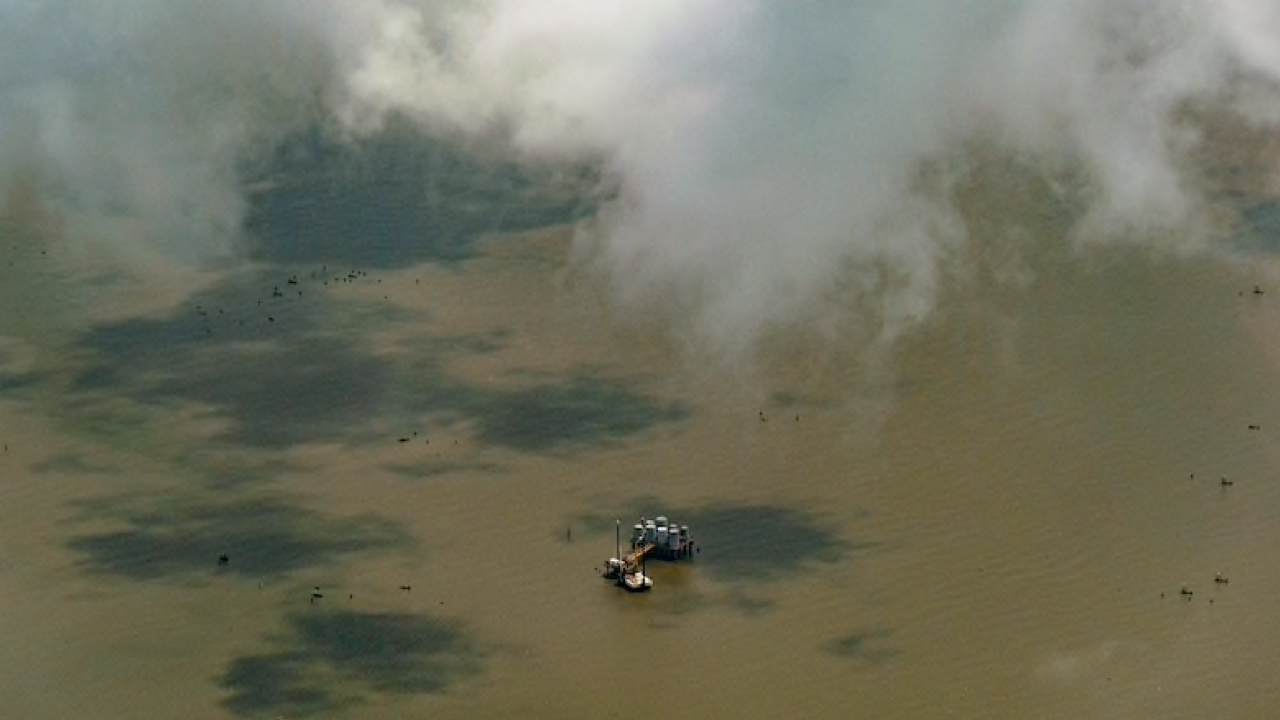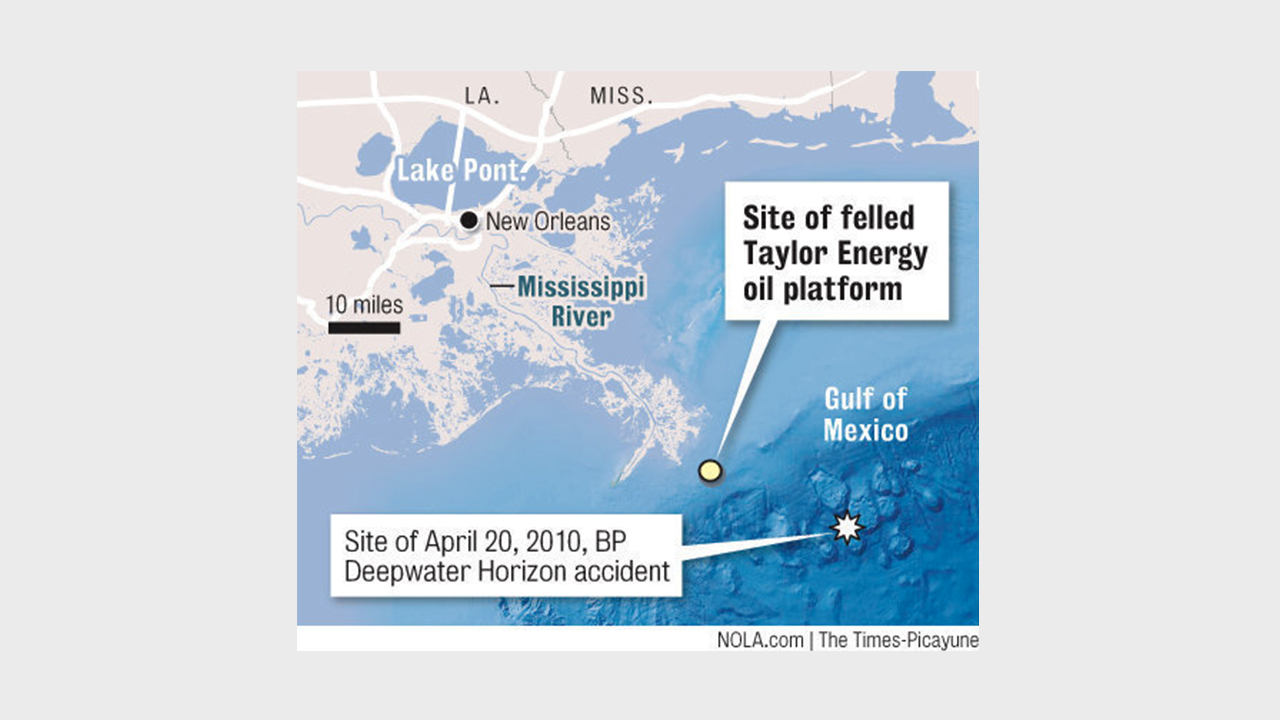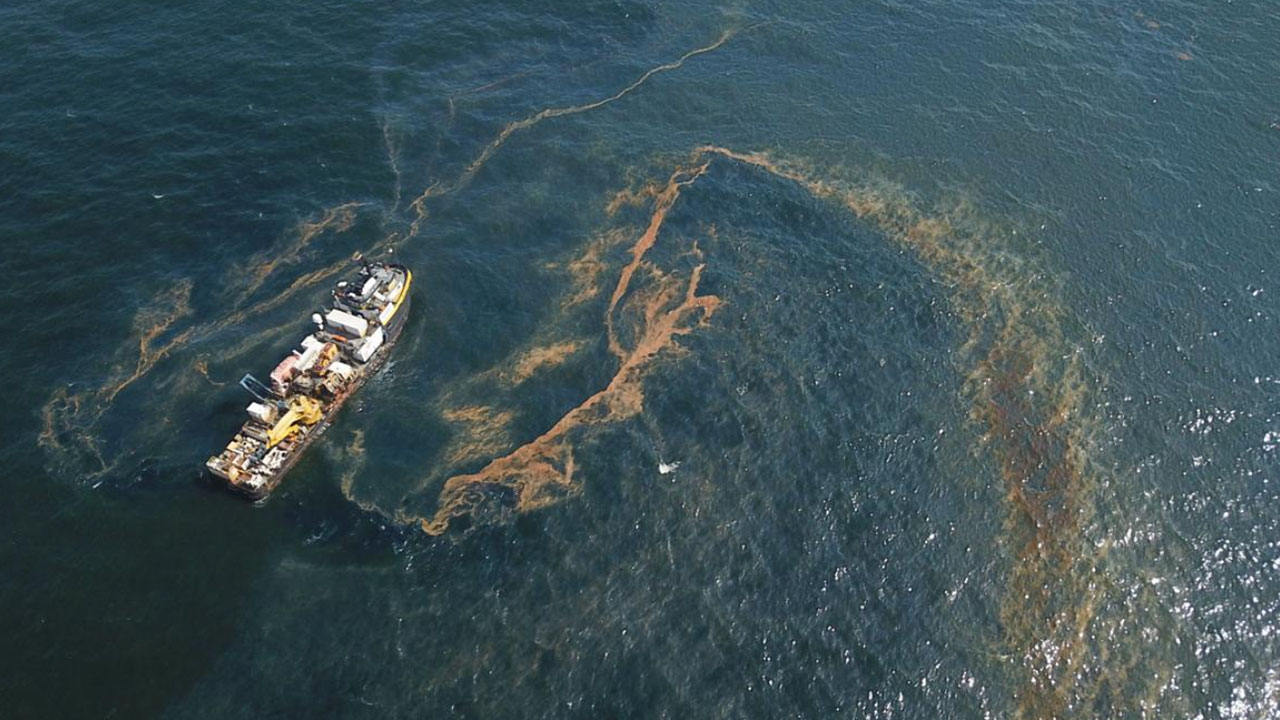Taylor Energy sold its oil and gas assets four years later (minus the leaking wells, which they had a legal responsibility to address) and ceased all drilling and production operations. The MC20 platform’s well conductors were left buried beneath the mud and sediment.
Since the initial incident, multiple scientific studies were conducted by federal and industrial experts. Federal officials directed Taylor Energy to remove the platform deck and sub-sea debris, decommission the oil pipeline, contain the leaking oil, and plug and abandon the wells.
For years, Taylor Energy’s attempts to design, construct and install a viable containment plan have failed. Taylor also underestimated the impact of the spill despite a ten-mile sheen. Captain Kristi Luttrell, Federal on Scene Coordinator (FOSC) took the bold step in 2018 of issuing Taylor Energy a Partial Notice of Federal Assumption and assumed authority for containing the oil. She also put out a comprehensive national Request for Proposal (RFP) for a contractor to safely capture the oil.
In April of 2019, a federal judge denied Taylor Energy’s demand that the U.S. Department of Interior return Taylor Energy money remaining in trust – some $432 Million – a trust that was established in 2008 and earmarked for 'decommissioning' Taylor’s leaking oil field.
Almost 15 years after the spill began, in November 2019 Louisiana-based Couvillion Group, L.L.C (“Couvillion Group”) was selected for the job of containing the spill by the U.S. Coast Guard in a national Request for Proposal (RFP) process. Couvillion was able to begin safely capturing and bringing the oil to shore In April of 2019.
One of the first actions of the Couvillion Group was to perform a detailed survey of the site. During this survey, underwater video footage captured the extent of the spill. What Timmy Couvillion, a seasoned fishing captain, engineer and Louisiana outdoorsman, saw gave him chills. A seemingly endless view of oil globules with amberjack and other marine life swimming amongst them.
The Couvillion Group’s tally of oil recovered reached 198,000 gallons in the first 6 months of collection (an average of 1075 gallons per day). Taylor Energy’s response to this remarkable engineering accomplishment was to sue the U.S. Coast Guard and Couvillion Group, incredibly asserting that containment actions would make the problem worse.
In a comment made to the Washington Post, the Federal On Scene Coordinator for the MC20 site, Captain Luttrell, lauded the custom-built containment invention, saying: “I’m in awe of what they did. We gave them a task and they did it, and they should be very proud of what they’ve done.”
As of August, 2020, over a half million gallons of oil with less than 1% water have been collected and recycled from the MC 20 site. This quantity is substantially more than what Taylor Energy had reported to the NRC (National Response Center). Without Couvillion Group's containment system this oil would have continued to contaminate the Gulf of Mexico.
The Issue
Louisiana, the United States, and the rest of the world are dependent on oil and gas. The oil and gas community has played a significant role in creating jobs, supporting our culture, and lobbying Washington to bring home hard-earned royalties to support the rebuilding of our coast. While oil spills are low probability, they have the potential to be high consequence. The people of Louisiana know better than most what a major spill can do to impact their way of life. A spill can wreak havoc on the environment, outdoor recreation, marine life and the economy. Spills also have a negative impact on the responsible party – their reputations, their bottom lines, and their ability to operate given the new regulations that typically arise from significant spills. From OPA 90 after the Valdez to the new regulations after the Horizon spill, running oil and gas projects becomes more challenging for all parties when one company makes a significant mistake.
Typically.
The Taylor Energy spill has lasted almost 16 years and, by some estimates, is on track to be on par with the Deepwater Horizon spill in terms of volume. While every other oil and gas company that does business in Louisiana – or anywhere in the United States - is required to launch a full force and highly regulated effort to clean up any spill of consequence, Taylor Energy’s efforts to contain the spill and stop the pollution were unsuccessful until 2018, when the US Coast Guard, under Federal On Scene Commander (FOSC) Captain Kristi Luttrell, given the unavailing response by Taylor Energy, and armed with data conducted a nationwide search for a highly technical, safe solution to this long term spill.
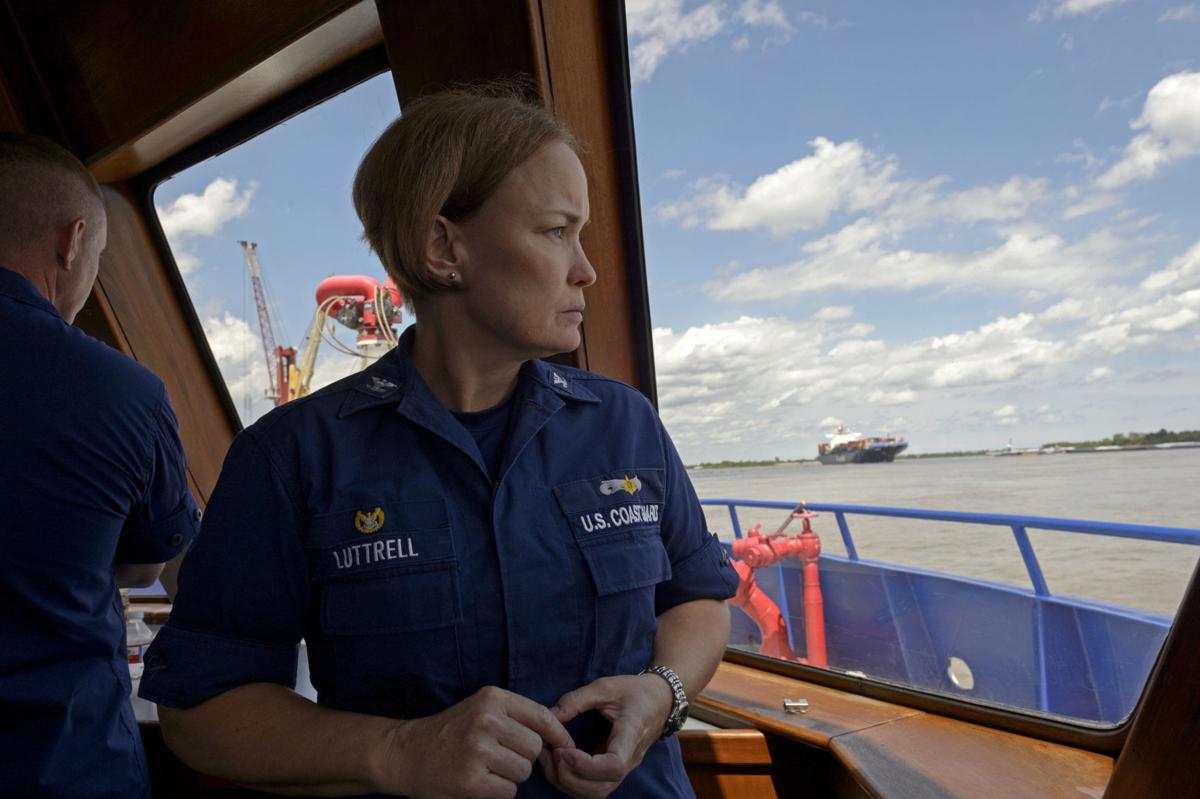
GENERATIONS OF LOUISIANIANS HAVE GROWN UP AS RECIPIENTS OF LARGESS FROM THE TAYLOR FOUNDATION. THE TOPS PROGRAM PROVIDES BETWEEN $2,700 AND $3,100 PER COLLEGE BOUND STUDENT, GENEROUS DONATIONS TO MUSEUMS AND NON-PROFITS AND ELECTED OFFICIALS HAVE CAST TAYLOR ENERGY IN A FAVORABLE LIGHT AND MAY HAVE RESULTED IN A BROAD RELUCTANCE TO ACT.
Resolutions to Council
The Opportunity
There is more work to be done to fully plug and abandon these wells per federal law. The plug and abandonment will benefit the environment, the shipping industry (the site is in a well-traveled shipping lane, meaning that ships have had to travel through oil for almost 16 years) and the marine life that have been swimming through this oil.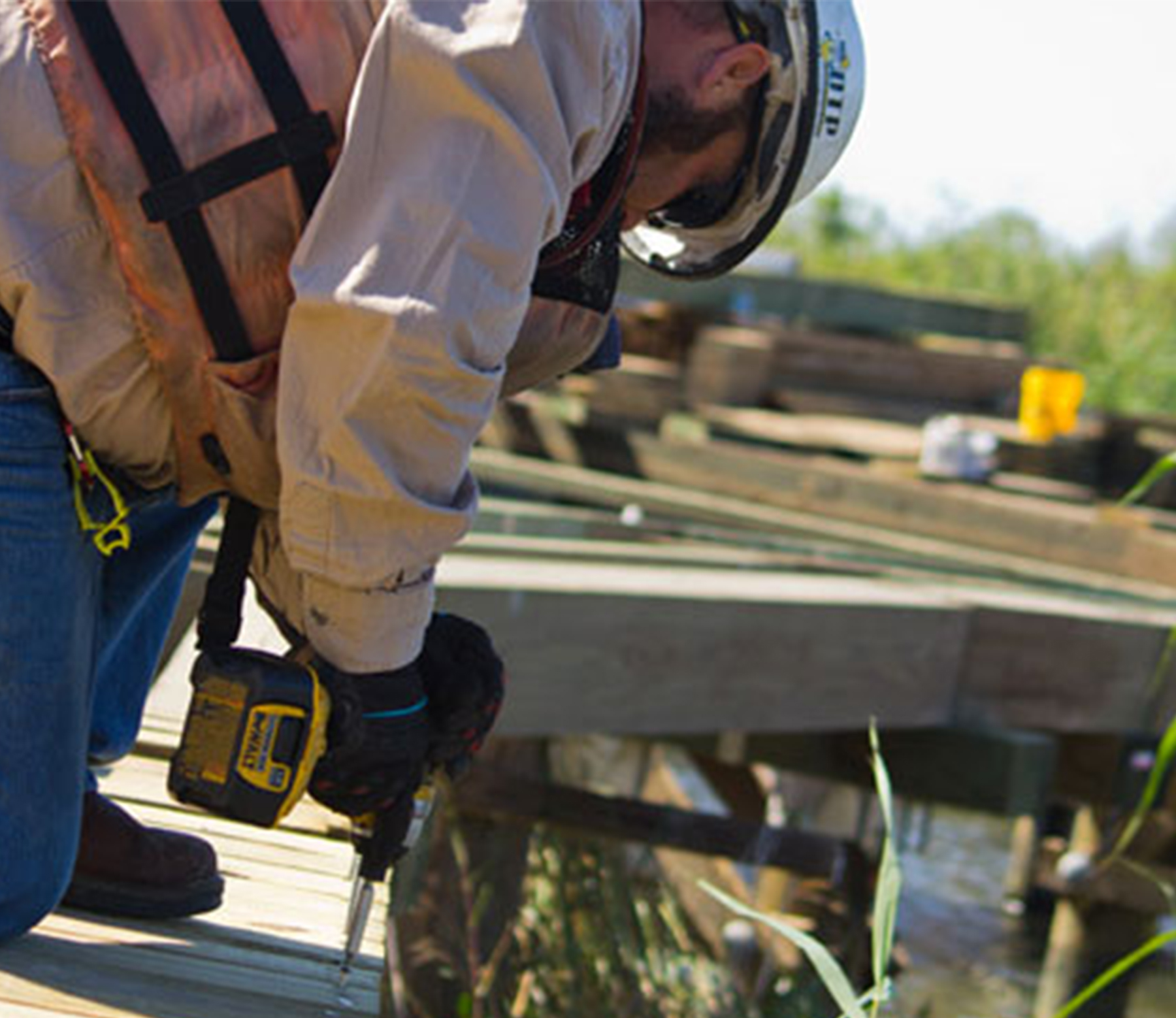
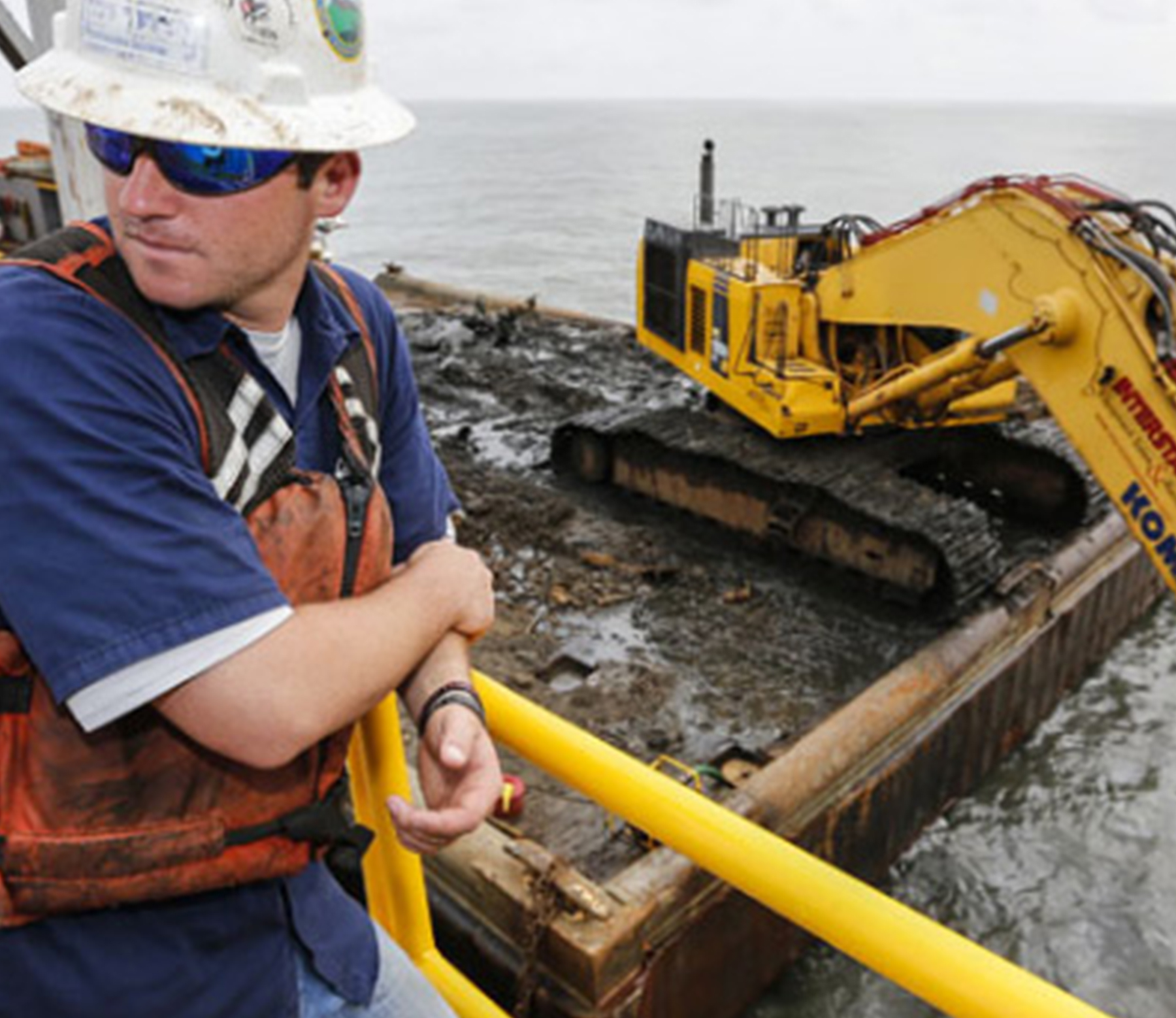
Permanently plugging and abandoning these wells per federal regulation will send a positive message that even the most complex problems can be solved.
Most importantly, lessons learned from the successful resolution of this situation can be applied to future low probability, high impact events.
Lawsuit
In November, 2018, the Federal Government hired a local Plaquemines Parish contractor, Couvillion Group, LLC (“Couvillion”) to take steps to arrest or mitigate the pollution. The Couvillion team designed and installed a Rapid Response Containment System. The system is a marvel of underwater engineering, design and construction; since going on line in May, 2019, the system has captured and removed more than 500,000 gallons of hydrocarbon pollution which otherwise would have flowed into the Gulf.
Taylor Energy from the outset objected to Couvillion’s involvement. Taking the position that it was more sound and safer to leave the site alone, and repeatedly publishing unrealistic and dubious estimates of oil pollution rates far lower than the actual discharge rate, Taylor Energy sued Couvillion in Federal Court, incredibly claiming among other arguments that Couvillion, by affixing its containment system to the sunken platform, was trespassing on Taylor Energy’s downed jacket, which had laid abandoned on the seabed for nearly 14 years.
Couvillion sought dismissal of the Taylor Energy federal suit by moving for summary judgment. The thrust of Couvillion’s argument was that it was entitled to two types of federal governmental immunity as a contractor working under the authority of the government in an attempt to arrest an environmental calamity. Taylor Energy filed multiple opposition memoranda in an effort to maintain this action, notwithstanding the Herculean effort by Couvillion, and the related success in addressing Taylor Energy’s pollution problem.
On August 21, 2020, United States District Judge Greg Gerard Guidry, granted Couvillion’s motion and dismissed Taylor Energy’s suit against Couvillion, with prejudice. In its erudite ruling, the Court held that Couvillion had proven beyond dispute that it was working under the authority of the government in addressing this ongoing pollution crisis and was immune from the claims asserted by Taylor Energy.
Judge Guidry’s dismissal with prejudice of Taylor Energy’s claims against Couvillion is a victory for the community at large as well as our marine environment, as removal of the pollution containment system would cause renewed pollution of pristine Louisiana and adjacent Federal waters. This ruling confirms protections afforded contractors hired by the Government and authorized by the Government to assist in pollution cleanup and avoids the chilling effect of intimidation by lawsuit.
Technology
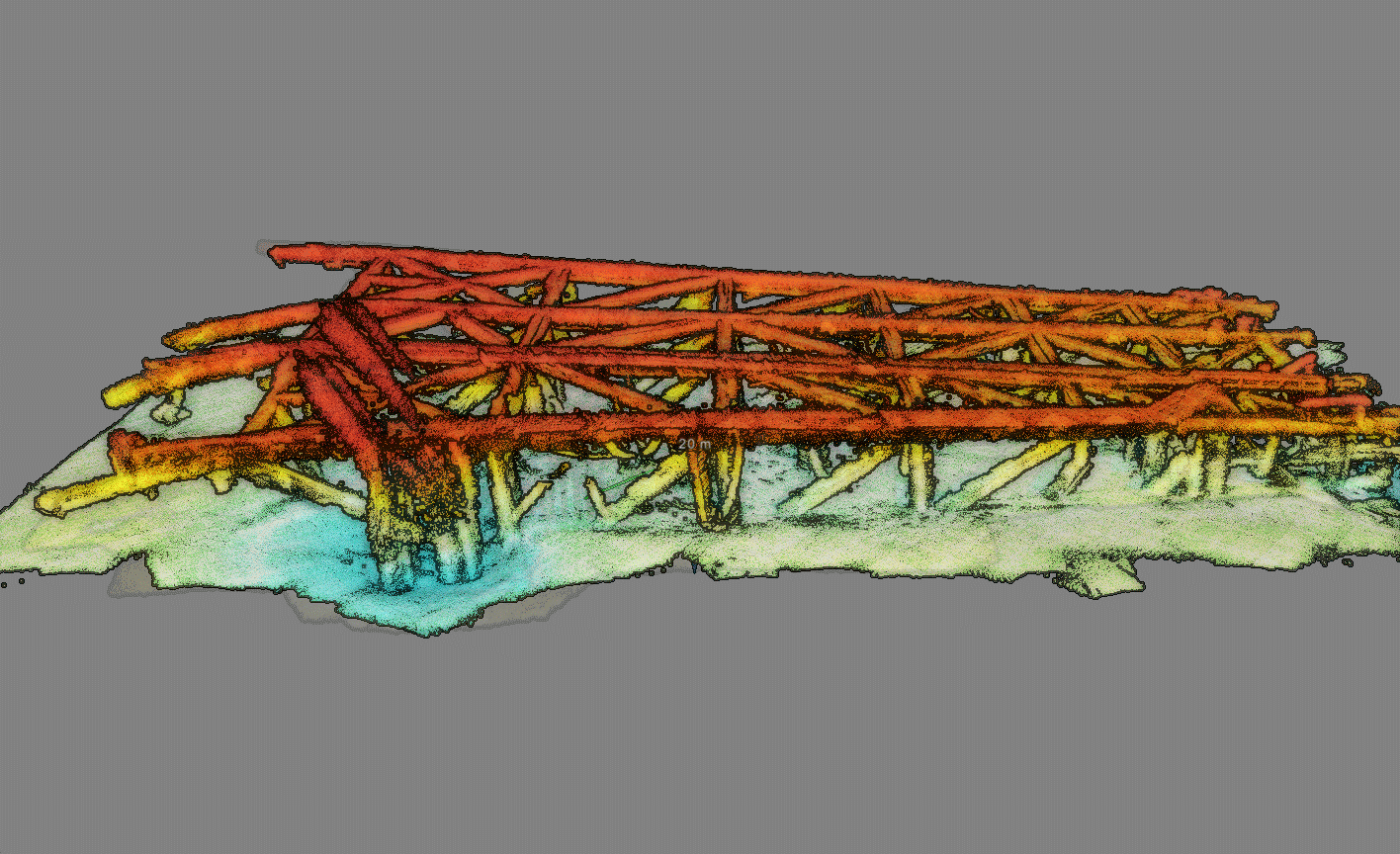
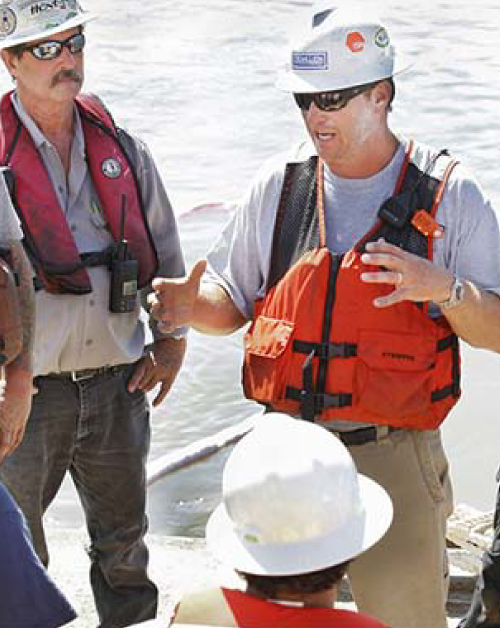
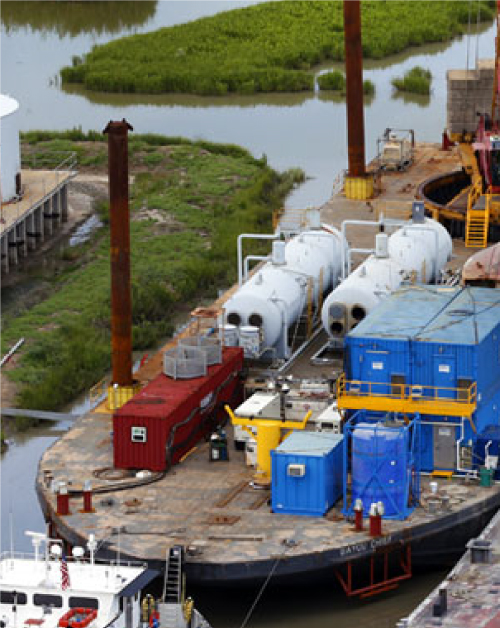
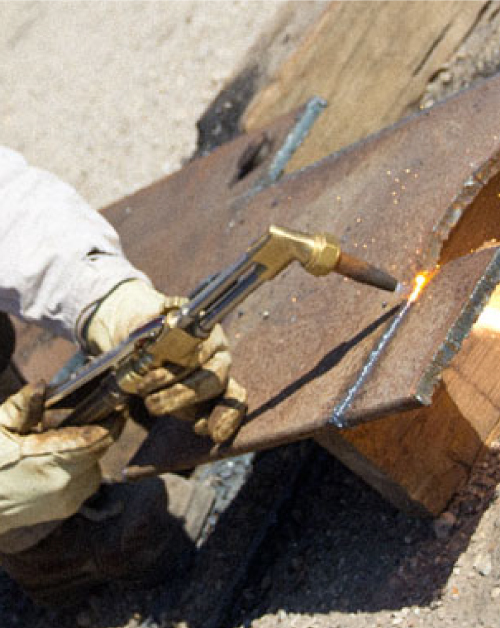
Live Update
Timeline

MC-20 Federal Administrative Orders to Taylor Energy
Media
-
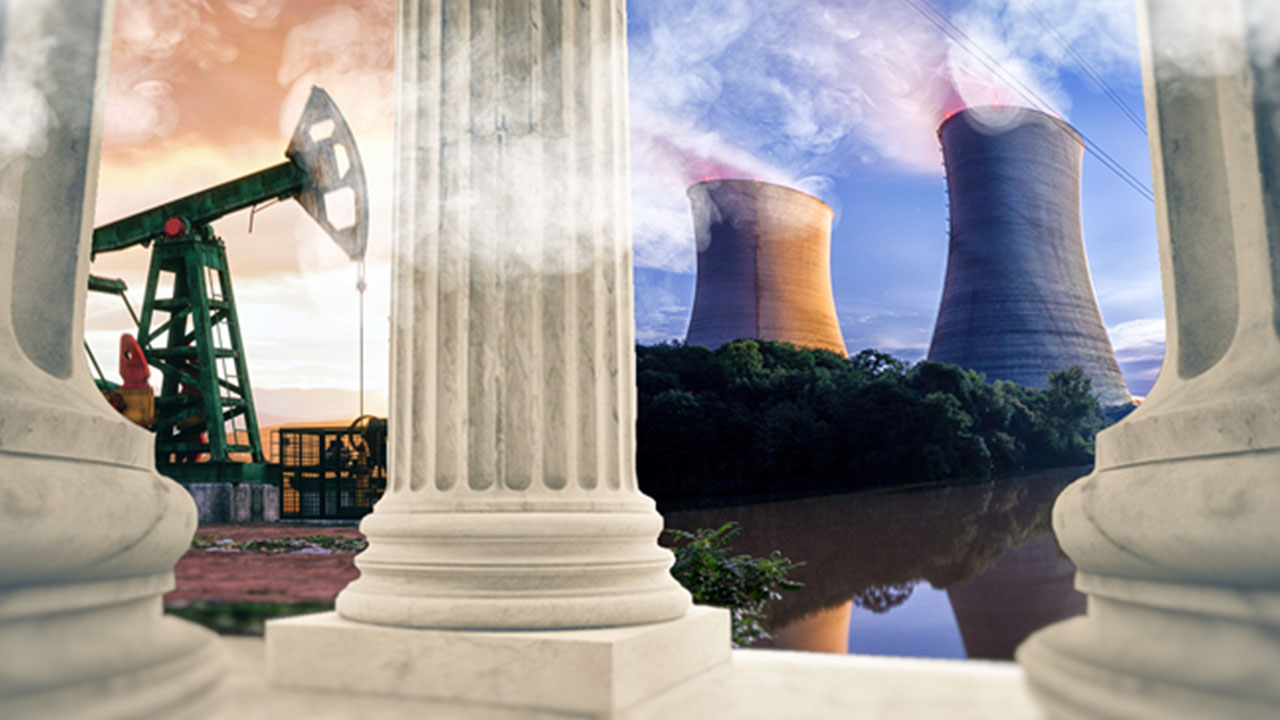
Media 18
-
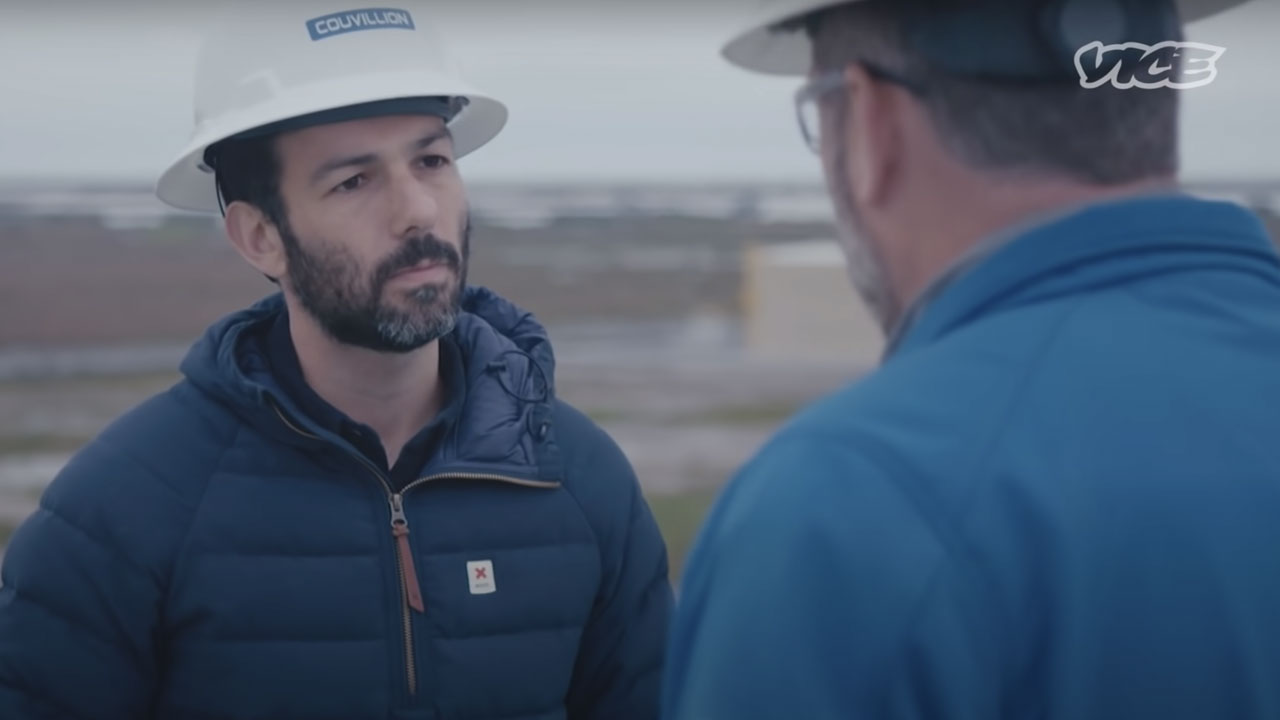
Media 17
-

Media 1
A ‘Volcano’ at the Bottom of the Gulf
Washington Post
-
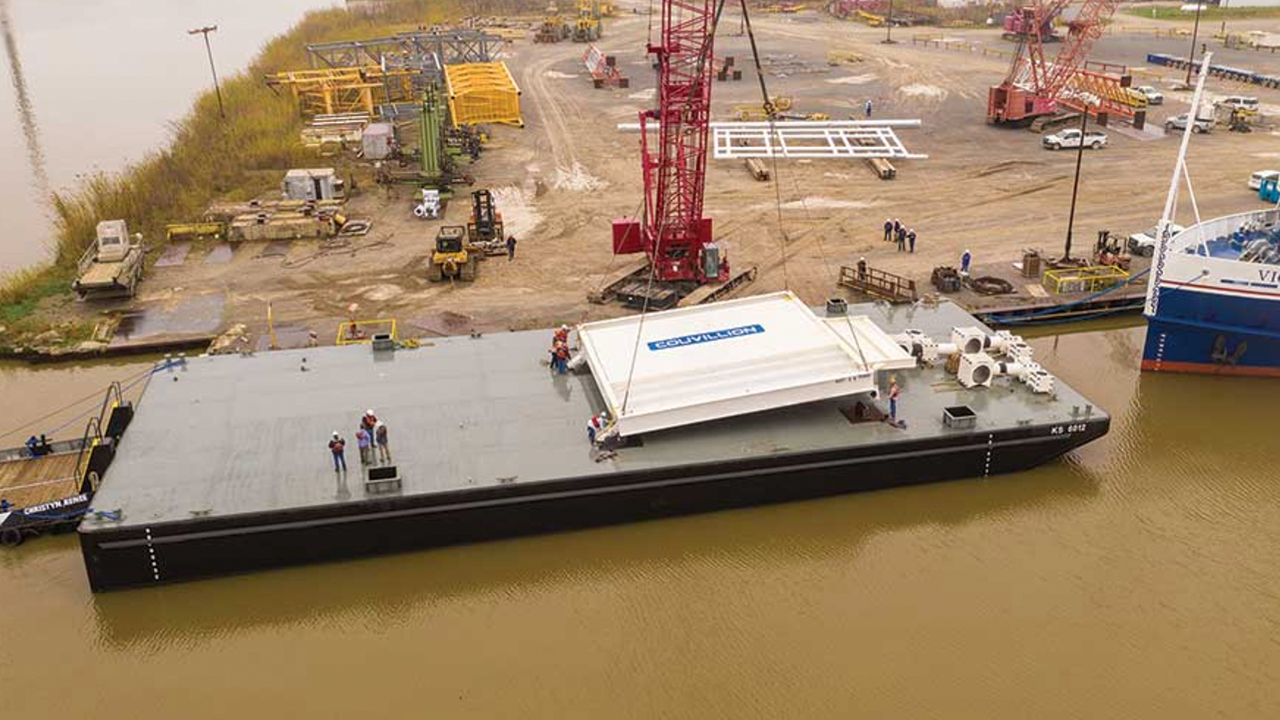
Media 6
Timmy Couvillion: Developed a System to Contain a Long-Neglected Ocean Oil Spill
Engineering News-Record
-
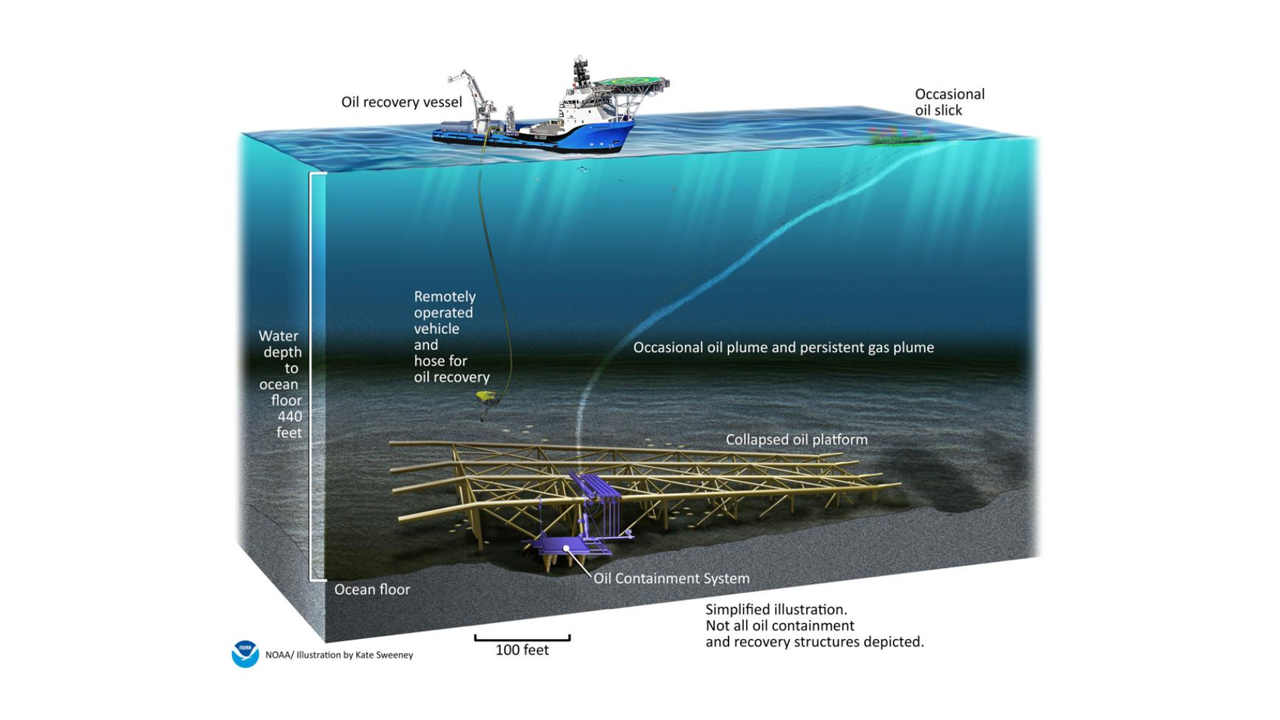
Media 7
Engineering Firm Helps Contain 15-year-old Oil Spill
Engineering News-Record
-

Media 10
-
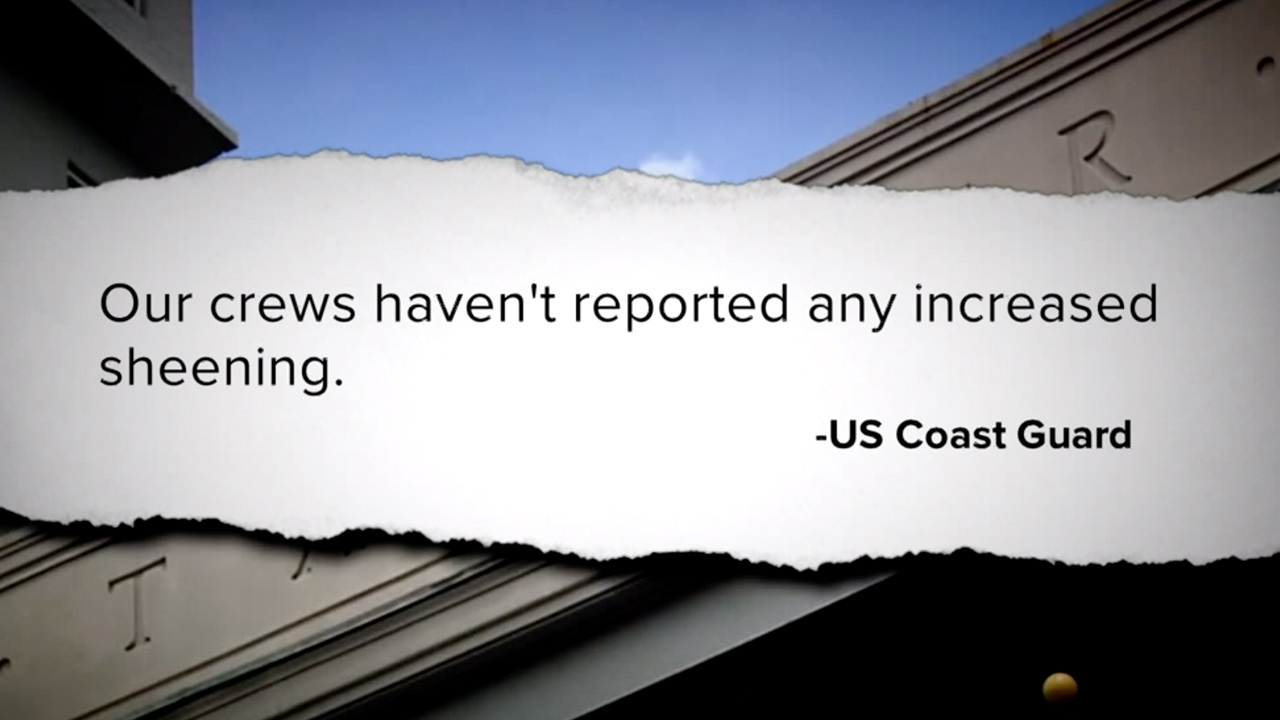
Media 12
About Couvillion Group
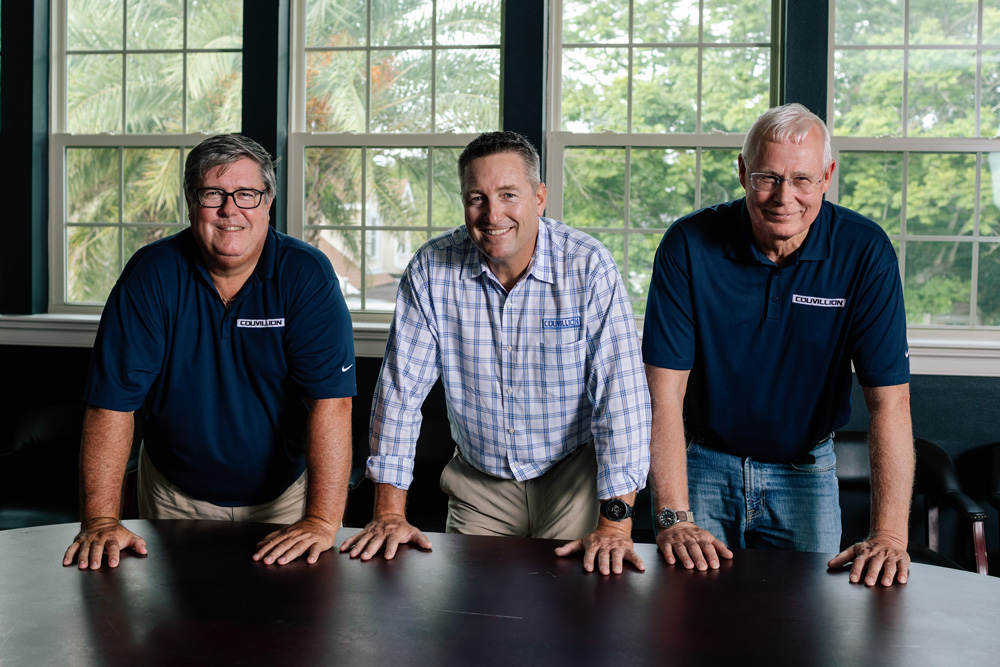
A key first responder in the Plaquemines Parish vessel recovery effort after Hurricane Katrina, Couvillion designed a unique lift and barge system that returned hundreds of vessels to service. And following the catastrophic BP oil spill, we deployed and managed marine equipment, vessels, personnel, and logistics for BP, the U.S. Coast Guard and National Park Service, and local government during the extended cleanup effort.
Since then, Couvillion has successfully completed a broad range of reconstruction projects including the Port Sulphur lift station, the Fort Jackson sluice gate, and Buras Boat Harbor. In 2013, we rebuilt, from the ground up historic, Katrina-battered Port Eads Marina – the last stop for fishermen and offshore workers along the Mississippi River before entering the Gulf of Mexico. Our most recent success is the invention of a successful subsea system to safely capture and bring to shore over 500,000 gallons of oil (as of September 1, 2020) spilled by Taylor Energy in what is the longest running oil spill in U.S. history.
We recognize that, now more than ever, Couvillion people are the reason for our continued success. Our business was founded on a set of enduring values that guide the way we conduct business. And as we continue our tradition of breaking new ground in marine construction and infrastructure, those values – along with our statements of mission and purpose – will help get us wherewe need to go.
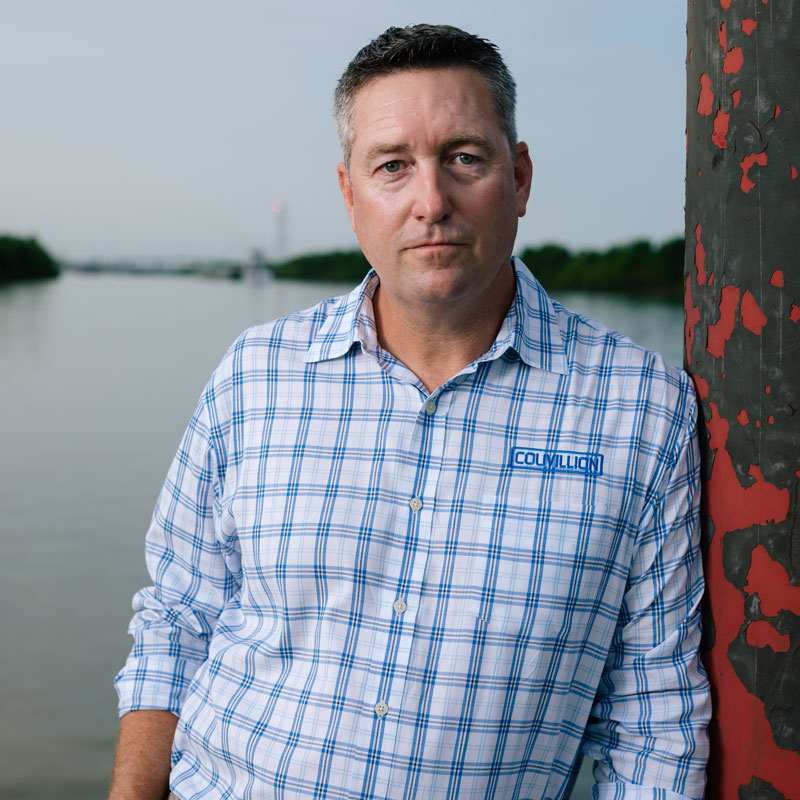
Timmy Couvillion
Timmy Couvillion is the President and CEO of Louisiana’s Belle Chasse-based Couvillion Group which specializes in providing marine construction and salvage, port and vessel maintenance services, emergency response, and disaster recovery for the oil & gas and marine industries, among others. For the last 15 years, Timmy and his team have excelled at tackling tough challenges with smart solutions and unrivaled results and the company is acknowledged as a high-quality service provider with clients such as BP, the U.S. Coast Guard, National Park Services, and local governments.
The Couvilli0n Group's work under the U.S. Coast Guard on the MC20 Taylor Energy spill has been lauded as a highly innovative feat of engineering, resulting in over 500,000 gallons of oil captured from the long-flowing wells as of September, 2020.
Timmy is a native of Belle Chase and has a mechanical engineering degree from the University of New Orleans. He is married and has three children. His hobbies revolve around the natural environment and include fishing, hunting, and many other outdoor recreational activities. He is also the president of a local wrestling club for youth in the community.



